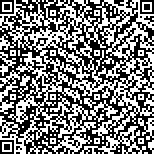| 摘要: |
| 无人机在城市空间中广泛应用于地
理测绘、空域物流等领域,对提升城市生活
品质具有重要意义。研究其三维路径可优化
配送效率与应用场景。目前,针对城市复杂
地区无人机配送路径与服务区的研究较少。
本研究以深圳城中村为例,采用三维网络分
析法,结合无人机倾斜摄影、实景建模及
ArcGIS Pro 平台网络分析模型,探究低空经
济下无人机的三维网络分析与服务分区技
术。首先,利用无人机倾斜摄影构建实景三
维模型,识别城市形态要素,建立可分析模
型。其次,基于城市形态要素生成避让路
线,分析最短、最优三维路径。最后,结合
社区社会经济属性,确定合理飞行距离与时
间,精确评估服务覆盖范围与需求。本研究
为无人机路径规划及低空经济发展提供技术
支持与借鉴。 |
| 关键词: 无人机 低空经济 三维网络分
析 路径规划 城中村 |
| DOI:10.13791/j.cnki.hsfwest.20250408001 |
| 分类号: |
| 基金项目:国家自然科学基金面上项目(51778039);国家自然科学基金项目(62203239) |
|
| Research on UAV delivery in the urban complex community based on 3D networkanalysis |
|
ZHANG Chun,LIANG Kaixuan,CHEN Mengke,PAN Tianlu,Wu Wenkun
|
| Abstract: |
| As an efficient micro-distribution technology in urban space, UAV has been widely used in
geographic mapping, airspace logistics, intelligent management and other fields, and has made an
important contribution to improving the quality of urban life. As an important part of low altitude
economy, low altitude delivery is becoming a solution to the freight pressure in the future cities based
on UAV technology. Low altitude delivery is carried out through drones, bypassing ground traffic
congestion and significantly reducing delivery time. Especially in high-density and complex areas,
low altitude distribution is achieved through the flight of drones in the low altitude airspace, breaking
through the limitations of ground transportation and providing high-density areas with more vertical
distribution services. The drone life circle brought about by the low altitude economy is gradually
changing the urban form, such as setting up drone take-off and landing points based on existing public
spaces, promoting the functional regeneration of existing public spaces. The setting of unmanned
aerial vehicle takeoff and landing platforms and flight paths will also have an impact on the form and
height of urban buildings. It is of great significance to study its three-dimensional path to improve
distribution efficiency and optimize application scenarios. Present research focuses on UAV facility
network and path planning algorithm, and the research on UAV distribution path and service area
analysis in complex urban areas is rare.Network Analysis, as a spatial analysis tool, is widely used in
the fields of urban planning and logistics distribution. Drone delivery requires path planning and
network construction in three-dimensional space, which poses a new challenge to the architecture
change of network analysis method from two-dimensional to three-dimensional. From the perspective
of urban spatial analysis, it is necessary to pay attention to the dynamic changes brought by low
altitude delivery to the urban spatial structure and urban living circle. As a typical representative of
complex environments, urban villages have long faced problems such as complex ground
transportation and tight public resources, and the urgent need to solve the problem of material
distribution. In the context of the rise of drone delivery, the reasonable delineation of drone service
zones, scientific selection of drone take-off and landing points, and effective planning of drone flight
routes can provide feasible paths for filling urban space and improving the quality of public services
in urban villages. In this study, taking the community scale that adapts to the distribution range of
drones as an example, the 3D network analysis method, UAV tilt photography, real-life modeling, and
network analysis model based on ArcGIS Pro platform were used to explore the 3D network analysis
of UAV and the partition technology of UAV delivery service in low-altitude economy. Firstly, the 3D
model was constructed by the tilt photography technology of UAV, and the urban morphological
elements such as building distribution and ground environment were identified. This method moreclearly identified complex terrain and three-dimensional spatial elements that are difficult to recognize in traditional planar remote sensing images, providing a
modeling platform for drone path planning in real environments and effectively addressing path planning problems in complex urban environments. Secondly,
based on the analysis of urban form factors, the avoidance route of UAV was generated, and the shortest and optimal three-dimensional routes of UAV
distribution were analyzed. This study comprehensively considered the spatial and social issues in complex areas, and conducted empirical research on the
correspondence and avoidance relationship between drone delivery and specific spatial elements. It also considered spatial elements such as land use, building
density, building form, and facility sites. Finally, through the service area analysis, based on the social and economic attributes of the community, the reasonable
flight distance and time of the UAV were determined. By sorting out the distribution problem using unmanned aerial vehicles as carriers, the collaborative
research between low altitude logistics at the community level and urban environment has been improved. Based on the 3D network analysis method, this study
provides technical support for UAV flight path and service partition, improves the space-time effectiveness of low-altitude economic services, and provides
references for UAV path planning and scientific and effective development of low-altitude economy. |
| Key words: UAV low altitude economy 3D network analysis urban village |


